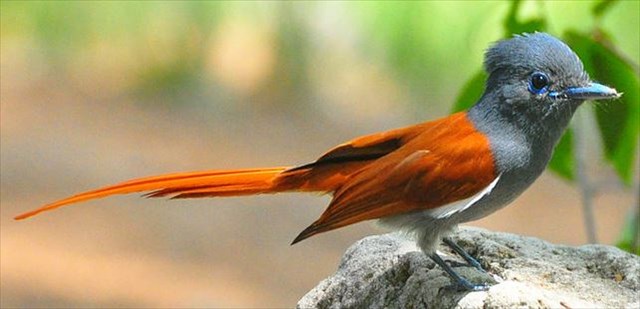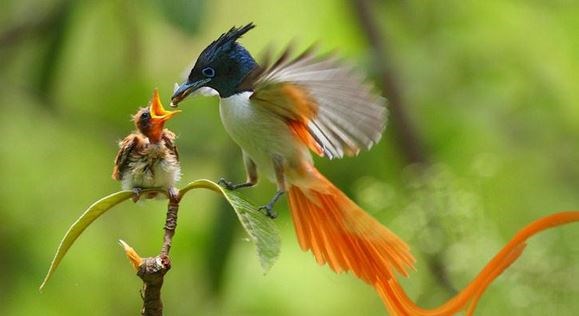Sigiria Forest #8: Flycatcher Finery

The cache, a customised bottle top mini-container, is hidden (GPS accuracy 8m) about 3m south of the trail at calf height in a stump covered by bark pieces in the quiet eastern part of Sigiria Forest.
To reach the cache (refer to trails map in the Gallery or download a Google Earth file of the trails here): after paying the forest entrance fee, from the Parking at the Karura Forest entrance (Gate A) to the east off Limuru road @ S 01 14.826 E 36 49.021 head back out of the gate and down to the main road. Cross this busy road (carefully!) and pick up the access track to the Sigiria Forest a short distance north @ S 01 14.993 E 36 48.931 follow this down a short distance and across the stream to the Sigiria Forest Gate @ S 01 14.804 E 36 48.901 close to the trailhead at Junction 54. From here head left SW along the trail starting just behind the gate hut towards the cache location.
Forest Entry Fees (free parking, Sigiria Forest gate open from 06h00-17h30)
Citizen (adult/child): Kshs 100/40
Resident: Kshs 200/100
Non-Resident: Kshs 600/300
Permission to place the cache was kindly granted by the Director of the Kenya Forest Service
 As I was preparing the hide, I heard the familiar distinctive call (listen here) and then spotted it - a very fancy bird - the African Paradise Monarch or Flycatcher (Tersiphone viridis ferreti), some 10m away in a nearby tree.
As I was preparing the hide, I heard the familiar distinctive call (listen here) and then spotted it - a very fancy bird - the African Paradise Monarch or Flycatcher (Tersiphone viridis ferreti), some 10m away in a nearby tree.
The paradise flycatchers are a genus of monarch flycatchers which ranges across Africa and Asia, as well as a number of islands. A few species are migratory but most are resident. Their striking feature is long central tail feathers (streamers) in the males of many species. Also males and females are sexually dimorphic (ie. look very different) with rufous, black and white plumage.
It is a medium-sized passerine (perching) bird (approx 20cm + tail streamers, another 17cm), a widespread common resident breeder in Africa south of the Sahara Desert and found in open forests, woods, bushland, savannah and gardens <2,500m. It has short legs and sits very upright whilst perched prominently, like a shrike. It is insectivorous, often hunting by flycatching. 2-3 eggs are laid in a tiny cup nest in a tree.
It has a black head, neck and underparts, chestnut wings (with a prominent white wingbar) and tail and a bright blue orbital ring. There is. The female has a browner tint to the underparts and lacks the wingbar and tail streamers. Males vary greatly in plumage in some areas and there is a morph where the chestnut plumage is instead white - also some races have black tail streamers.
It is a noisy bird with a harsh scolding call but also a song of rapidly delivered mellow ringing notes
The Red-bellied Paradise Flycatcher (Terpsiphone rufiventer) is closely related and hybrids occur with underparts mixed black and red.
See here for a video of a mother repeatedly feeding 2 very hungry chicks.